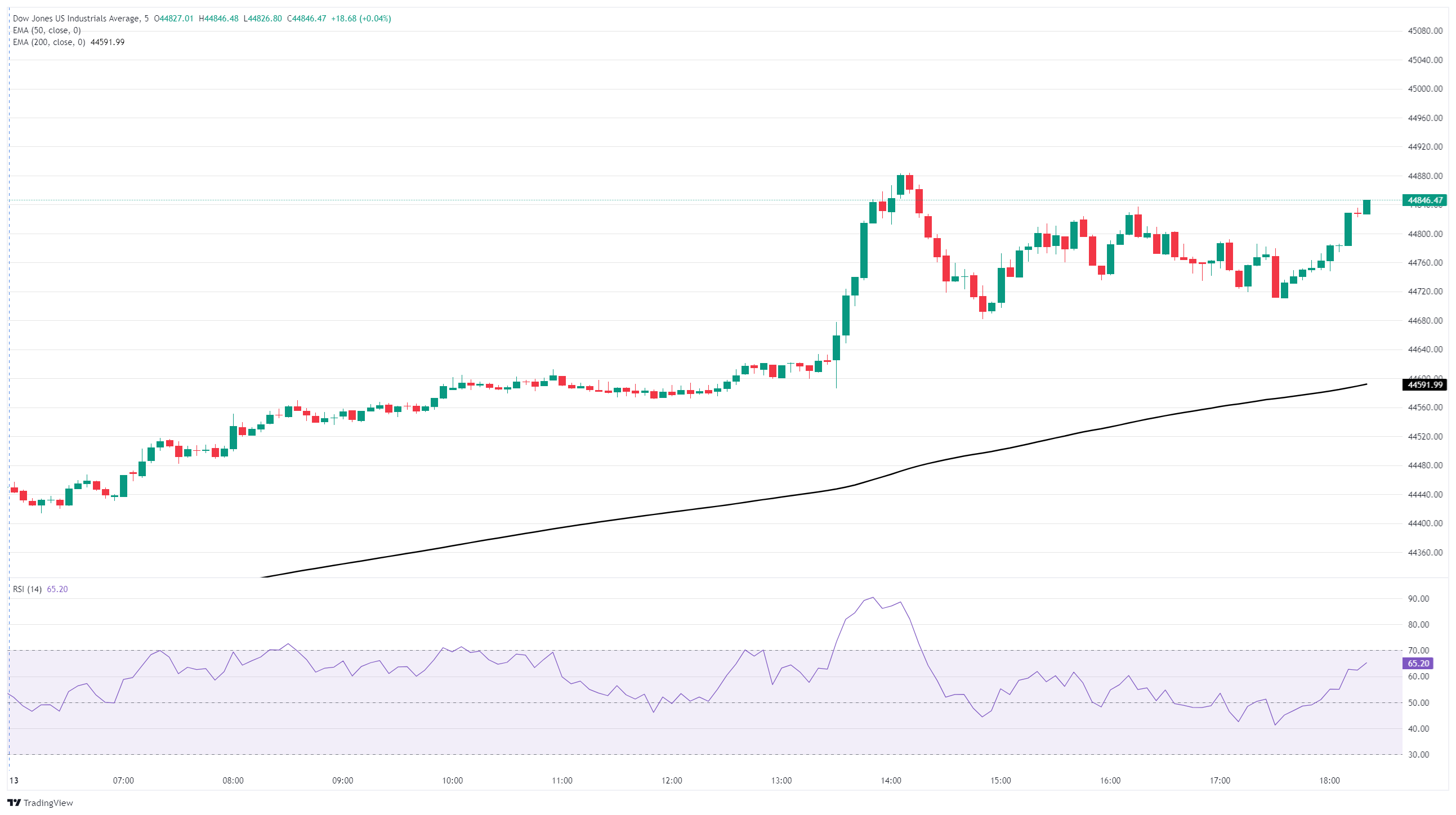Dow Jones Industrial Average extends gains on renewed Fed rate cut hopes
- The Dow Jones rose again on Wednesday as equities look higher.
- Investors have beaten back recession fears following a slump in labor data last week.
- Rate markets now see better-than-even odds of three straight rate cuts by the end of the year.
The Dow Jones Industrial Average (DJIA) rose on Wednesday as investors pushed equities into a second straight day of decisive gains. Interest rate cut expectations have been pinned higher, bolstering broad-market sentiment as traders broadly expect up to three interest rate cuts through the year’s end.
The Dow Jones was pushed firmly above the 44,500 level, and is back on track to challenge the 45,000 major handle once again. Price action is still on the low side of record highs above 45,130, with bullish momentum getting pushed higher by technical support from the 50-day Exponential Moving Average (EMA) near 43,780.
Fed rate cut hopes climb higher
Despite a general uptick in core inflation figures this week, investors are brushing off rising price pressures as hopes for an accelerated pace of Fed rate cuts return to the forefront of traders’ attention. According to the CME’s FedWatch Tool, rate markets are pricing in 99.95% certainty that the Fed will be delivering at least a quarter-point interest rate cut on September 17, with 1-in-3 odds of a double-cut. Overall, rate traders are expecting slightly better-than-even odds that the Fed will deliver a third 25 bps rate trim by mid-December.
Investors will be looking ahead to Thursday’s Producer Price Index (PPI) inflation print, which is unlikely to derail Fed rate cut hopes. US PPI inflation specifically excludes any items that would immediately be impacted by tariff price changes, limiting the potential for lopsided trade policies to directly impact business-level inflation. Still, median market forecasts expect an uptick in core PPI inflation to 2.9% YoY in July, up from 2.6% for the previous period.
Dow Jones 5-minute chart

Dow Jones daily chart

Dow Jones FAQs
The Dow Jones Industrial Average, one of the oldest stock market indices in the world, is compiled of the 30 most traded stocks in the US. The index is price-weighted rather than weighted by capitalization. It is calculated by summing the prices of the constituent stocks and dividing them by a factor, currently 0.152. The index was founded by Charles Dow, who also founded the Wall Street Journal. In later years it has been criticized for not being broadly representative enough because it only tracks 30 conglomerates, unlike broader indices such as the S&P 500.
Many different factors drive the Dow Jones Industrial Average (DJIA). The aggregate performance of the component companies revealed in quarterly company earnings reports is the main one. US and global macroeconomic data also contributes as it impacts on investor sentiment. The level of interest rates, set by the Federal Reserve (Fed), also influences the DJIA as it affects the cost of credit, on which many corporations are heavily reliant. Therefore, inflation can be a major driver as well as other metrics which impact the Fed decisions.
Dow Theory is a method for identifying the primary trend of the stock market developed by Charles Dow. A key step is to compare the direction of the Dow Jones Industrial Average (DJIA) and the Dow Jones Transportation Average (DJTA) and only follow trends where both are moving in the same direction. Volume is a confirmatory criteria. The theory uses elements of peak and trough analysis. Dow’s theory posits three trend phases: accumulation, when smart money starts buying or selling; public participation, when the wider public joins in; and distribution, when the smart money exits.
There are a number of ways to trade the DJIA. One is to use ETFs which allow investors to trade the DJIA as a single security, rather than having to buy shares in all 30 constituent companies. A leading example is the SPDR Dow Jones Industrial Average ETF (DIA). DJIA futures contracts enable traders to speculate on the future value of the index and Options provide the right, but not the obligation, to buy or sell the index at a predetermined price in the future. Mutual funds enable investors to buy a share of a diversified portfolio of DJIA stocks thus providing exposure to the overall index.
